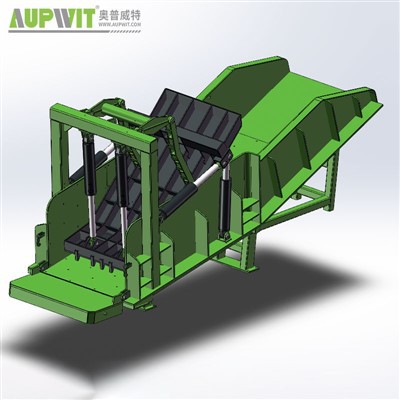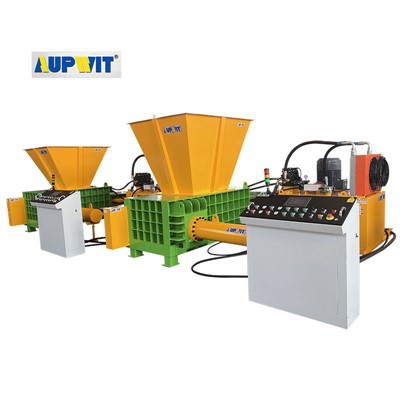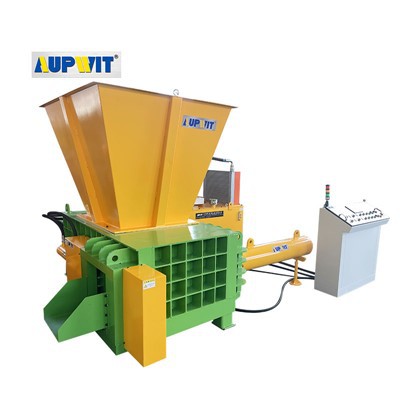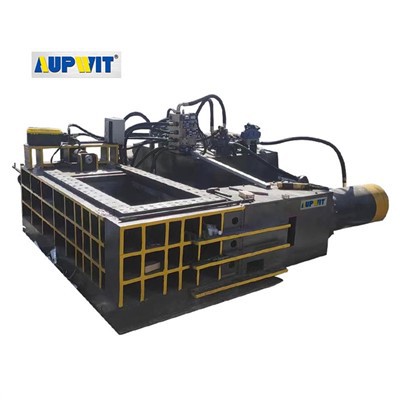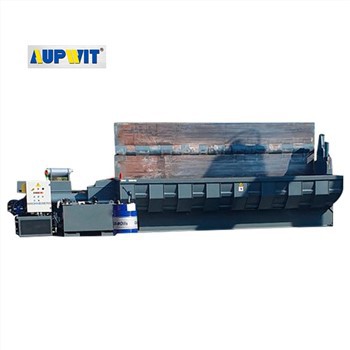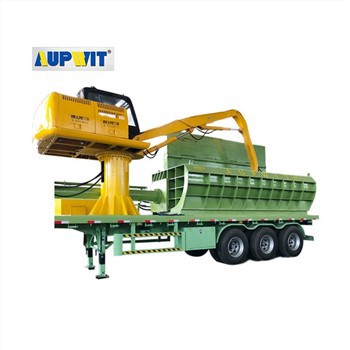Introduction
The price of a metal baler is a critical consideration for businesses involved in metal recycling, as it directly influences capital investment, operational efficiency, and overall profitability. Whether for a small scrap yard or a large industrial recycling facility, understanding the key factors that determine the price of a metal baler can help businesses make an informed purchasing decision. This article explores the primary factors influencing metal baler prices, the different types of balers available, and tips for selecting the right baler within your budget.
What is a Metal Baler?
A metal baler is a machine used to compress and compact metal scrap, such as aluminum, steel, copper, and other metals, into bales for easier transportation, storage, and recycling. Metal balers are widely used in scrap yards, recycling centers, and industrial plants, as they improve the efficiency of scrap processing, reduce storage space requirements, and lower transportation costs.
There are various types of metal balers, including vertical, horizontal, manual, automatic, and semi-automatic balers, each designed to meet different processing needs. The price of a metal baler can vary significantly based on its type, features, and capacity.
Factors Affecting Metal Baler Price
-
Type of Metal Baler
The type of baler plays a significant role in determining the price. The most common types of metal balers include:
-
Vertical Balers: Vertical balers are compact and designed for smaller operations. They are often used in scrap yards or recycling centers with limited space. Vertical balers tend to have a lower price point, making them ideal for businesses with lower processing volumes.
-
Horizontal Balers: Horizontal balers are larger and designed for high-volume metal recycling operations. They typically have a higher price tag due to their larger size, higher throughput, and more advanced features, including automatic feeding and bale ejection.
-
Automatic vs. Manual Balers: Automatic metal balers, which offer features like automatic feeding, pressing, and ejection, are more expensive than manual or semi-automatic balers. While manual balers are more affordable, they require more human intervention, reducing their overall efficiency.
-
Semi-Automatic Balers: These balers fall between manual and fully automatic balers. They are often priced lower than fully automatic models but still offer significant automation, making them a good option for businesses seeking a balance between cost and efficiency.
-
Baler Capacity and Size
The capacity and size of the baler directly impact its price. Larger balers capable of processing higher volumes of scrap metal tend to have a higher price. For example, a baler that can handle several tons of metal per hour will generally cost more than a baler that can process only a few hundred kilograms.
-
Small Capacity Balers: These are typically used by smaller operations and can handle lower volumes of metal scrap. Prices for smaller balers range from $5,000 to $15,000.
-
Medium Capacity Balers: These balers are used in medium-sized recycling operations, and their prices typically range from $15,000 to $50,000, depending on the features and automation levels.
-
High-Capacity Balers: Large-scale industrial balers designed for high throughput can cost anywhere from $50,000 to over $100,000, with top-end models designed for large-scale operations potentially exceeding $200,000.
-
Hydraulic System and Pressing Force
The hydraulic system and the pressing force of the baler are key determinants of its performance. The more powerful the hydraulic system, the more expensive the machine will be. Baling scrap metal requires significant force to compress materials tightly into dense bales. Machines with higher pressing forces are typically more expensive due to the advanced hydraulic systems and components required.
-
Baler Features and Automation
Modern metal balers come equipped with a range of features designed to increase efficiency, reduce manual labor, and improve the overall performance of the machine. These additional features can significantly impact the price.
-
PLC Control Systems: Baling machines with programmable logic controllers (PLC) provide precise control over the baling process, increasing accuracy and minimizing errors. PLC systems generally add to the cost.
-
Automatic Feeding Systems: Some metal balers include automatic feeding systems that reduce manual labor by continuously feeding scrap metal into the machine. This automation increases the price of the baler but improves overall efficiency.
-
Bale Ejection Systems: Automatic bale ejection systems allow for faster cycle times and higher throughput. Baling machines with these features are typically more expensive.
-
Strapping and Binding Systems: Many high-end balers include automatic strapping systems that securely bind the bales after they are compacted. This adds convenience but can also increase the price.
-
Brand and Manufacturer
The manufacturer and brand reputation also influence the price of metal balers. Well-established brands that are known for producing reliable, durable, and high-quality machines tend to charge more for their products. However, investing in a reputable brand often ensures better after-sales support, longer machine lifespan, and access to spare parts.
-
Quality and Materials
The quality of the materials used in the construction of the baler also affects its price. Machines made with high-quality steel, advanced hydraulic components, and durable parts will typically come at a premium price. High-end components ensure better performance, lower maintenance costs, and a longer lifespan, making them a more cost-effective investment in the long run.
Additional Costs to Consider
-
Installation and Setup: Many metal balers require professional installation, which can add several thousand dollars to the overall price.
-
Maintenance and Spare Parts: Regular maintenance is necessary to keep the baler running efficiently, and the cost of spare parts can add up over time. Machines with more complex automation systems may require more frequent servicing.
-
Shipping and Handling: Larger balers, especially horizontal ones, are bulky and may incur additional shipping and handling costs. These expenses should be factored into the total cost of the machine.
Tips for Selecting the Right Metal Baler
-
Assess Your Needs: Consider the volume of metal scrap you process, the available space in your facility, and the level of automation you require. Smaller operations may benefit from vertical balers, while larger operations will need high-capacity horizontal models.
-
Prioritize Efficiency: A higher initial investment in an automatic baler may pay off in the long run due to increased efficiency and reduced labor costs.
-
Evaluate Total Cost of Ownership: Don't just focus on the upfront cost of the baler. Consider the total cost of ownership, including energy consumption, maintenance costs, and the potential for downtime.
-
Compare Manufacturers: Get quotes from multiple manufacturers and compare their prices, warranties, and support services. Read reviews and seek recommendations from other businesses in the industry.
Conclusion
The price of a metal baler is influenced by a variety of factors, including its type, capacity, features, and the manufacturer’s reputation. While the upfront cost can vary greatly, businesses should focus on choosing a machine that meets their specific needs while offering long-term reliability and efficiency. By carefully evaluating the total cost of ownership, companies can make a smart investment in metal recycling technology that will contribute to their overall productivity and profitability.


